Team #1 - Multi-Instrument Measurement Suite
Team Members
Trevor Cutsor
Hunter Christensen
Andrew Thurman
Jack Dempsey
Faculty Supervisor
Mark Bauer
Project Descrition
The Multi-Instrument Measurement Suite was designed to provide rural/lower-income middle school and high school students an inexpensive and accurate scientific measurement device. The suite contains a fabricated PCB with all circuitry needed to measure temperature, pH, mass, vertical and horizontal displacement, and voltage. All of this is enclosed in a custom 3D printed housing with an external power source for remote measurements, and LCD to display outputs, and a joystick to toggle through the sensor menu.
Trevor Cutsor
Hunter Christensen
Andrew Thurman
Jack Dempsey
Faculty Supervisor
Mark Bauer
Project Descrition
The Multi-Instrument Measurement Suite was designed to provide rural/lower-income middle school and high school students an inexpensive and accurate scientific measurement device. The suite contains a fabricated PCB with all circuitry needed to measure temperature, pH, mass, vertical and horizontal displacement, and voltage. All of this is enclosed in a custom 3D printed housing with an external power source for remote measurements, and LCD to display outputs, and a joystick to toggle through the sensor menu.
Team #2 - Automated Greenhouse
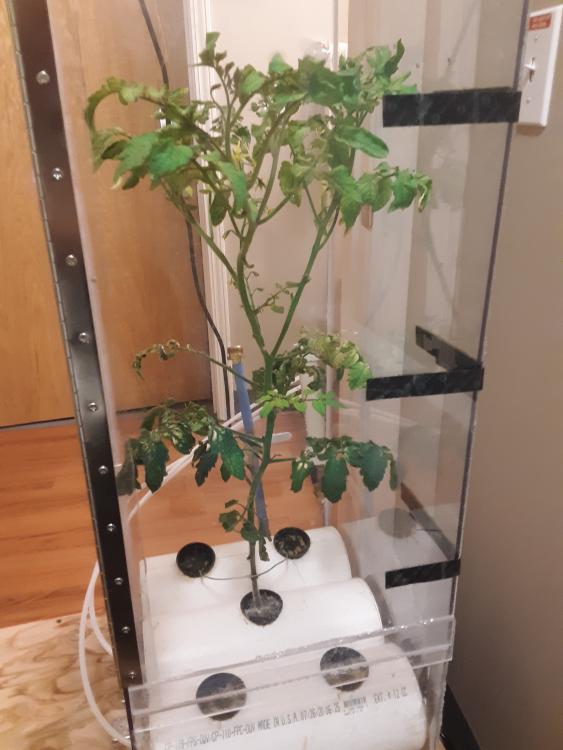
Team Members
Benoit Bikeli Bikeli
Clancy Gill
Juan Ramirez Diaz
Cameron Porter
Thomas Schoenstein
Faculty Supervisor
Mark Bauer
Project Descrition
We have designed a greenhouse that is automated to provide the best environment for a variety of plants. This is designed for in home use to provide fresh herbs and vegetables, with the ability to grow fresh tomatoes within your own home. The system is an aeroponic system which has been found to be the most efficient way to grow plants. This comes at the cost of complexity because many factors must be monitored by daily. Doing this by hand can be time consuming, and if forgotten can lead to the plants dying in a relatively quick period of time. This system automates that monitoring allowing people unfamiliar with the method or who don’t have the time to benefit from it.
Benoit Bikeli Bikeli
Clancy Gill
Juan Ramirez Diaz
Cameron Porter
Thomas Schoenstein
Faculty Supervisor
Mark Bauer
Project Descrition
We have designed a greenhouse that is automated to provide the best environment for a variety of plants. This is designed for in home use to provide fresh herbs and vegetables, with the ability to grow fresh tomatoes within your own home. The system is an aeroponic system which has been found to be the most efficient way to grow plants. This comes at the cost of complexity because many factors must be monitored by daily. Doing this by hand can be time consuming, and if forgotten can lead to the plants dying in a relatively quick period of time. This system automates that monitoring allowing people unfamiliar with the method or who don’t have the time to benefit from it.
Team #3 - Intake Manifold Ford V10
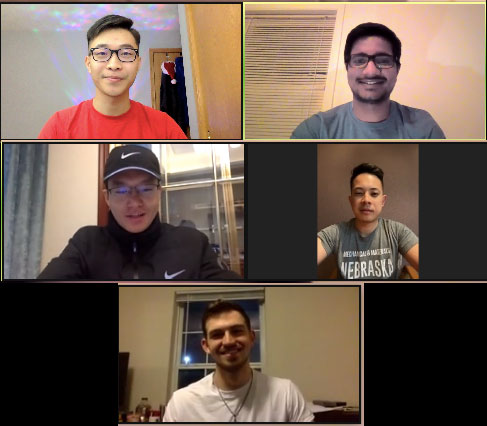
Team Members
Kamal Chavda
John Dong
Tonny Nguyen
Kyle Settles
Yuchen Yang
Faculty Supervisor
Jung Yul Lim
Project Descrition
This project is to design the intake manifold of an ethanol engine. Our purpose is to provide the best fuel economy and to maintain its level of performance after running for over 10,000 hours. The intake design is dependent on other projects that will affect the result of the project. This Intake manifold consists of 10 intake chambers. The chambers will distribute air evenly to each cylinder. The best approach is to redesign the runner since they are the closest to piston block. This design will be seen further in detail to determine which design increases the overall performance of the ethanol engine. After collecting measurements and experimental data from the engine and adjacent projects. We can better determine what would be the best design to accomplish our purpose.
Kamal Chavda
John Dong
Tonny Nguyen
Kyle Settles
Yuchen Yang
Faculty Supervisor
Jung Yul Lim
Project Descrition
This project is to design the intake manifold of an ethanol engine. Our purpose is to provide the best fuel economy and to maintain its level of performance after running for over 10,000 hours. The intake design is dependent on other projects that will affect the result of the project. This Intake manifold consists of 10 intake chambers. The chambers will distribute air evenly to each cylinder. The best approach is to redesign the runner since they are the closest to piston block. This design will be seen further in detail to determine which design increases the overall performance of the ethanol engine. After collecting measurements and experimental data from the engine and adjacent projects. We can better determine what would be the best design to accomplish our purpose.
Team #4 - UNMC Escape VR
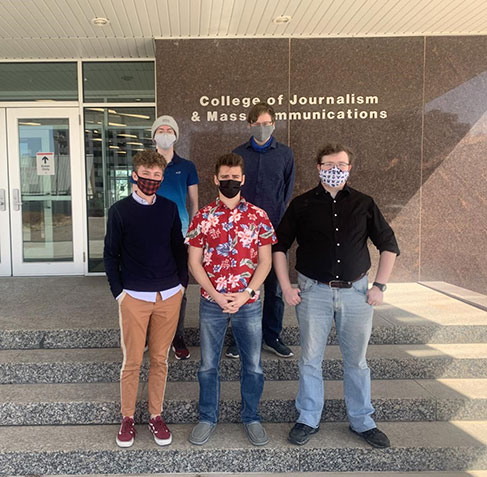
Team Members
Adrian Pilkington
Charles Kaup
William Gardner
Joey Novotny
Tanner Skelton
Faculty Supervisor
Sue Schuelke
Project Descrition
Each year nearly 270,000 Americans die of sepsis, but with early recognition and treatment, 80% of sepsis deaths could be prevented. Sepsis is a critical healthcare issue, and better education could potentially save millions of lives and dollars. Nurses across America are being taught about sepsis via lecture format, but this current format is failing the hundreds of thousands dying each year. Thus, the University of Nebraska Medical Center’s College of Nursing (UNMC) aims to better educate nurses on how to detect and treat sepsis in a timely manner.
The Sepsis Escape Room VR team created a virtual reality game simulating an escape room for nurses to test their knowledge of sepsis. Developed for Oculus Quest using Unity, Blender, and Photon, the game allows nurses to solve sepsis-related puzzles in single or multiplayer mode. As sepsis is a time-sensitive disease, the game itself is limited to 20 minutes, otherwise, the patient dies. The player is placed in a room where they must first identify that the disease they are dealing with is sepsis and then must solve puzzles in five different rooms relating to the five steps of the Sepsis Bundle in order. Each room has a different theme, symbolizing how sepsis can affect people from all different walks of life. As UNMC incorporates the game into their curriculum, nurses will be better equipped at diagnosing and treating sepsis in a time-sensitive manner, potentially being the difference between life and death.
Adrian Pilkington
Charles Kaup
William Gardner
Joey Novotny
Tanner Skelton
Faculty Supervisor
Sue Schuelke
Project Descrition
Each year nearly 270,000 Americans die of sepsis, but with early recognition and treatment, 80% of sepsis deaths could be prevented. Sepsis is a critical healthcare issue, and better education could potentially save millions of lives and dollars. Nurses across America are being taught about sepsis via lecture format, but this current format is failing the hundreds of thousands dying each year. Thus, the University of Nebraska Medical Center’s College of Nursing (UNMC) aims to better educate nurses on how to detect and treat sepsis in a timely manner.
The Sepsis Escape Room VR team created a virtual reality game simulating an escape room for nurses to test their knowledge of sepsis. Developed for Oculus Quest using Unity, Blender, and Photon, the game allows nurses to solve sepsis-related puzzles in single or multiplayer mode. As sepsis is a time-sensitive disease, the game itself is limited to 20 minutes, otherwise, the patient dies. The player is placed in a room where they must first identify that the disease they are dealing with is sepsis and then must solve puzzles in five different rooms relating to the five steps of the Sepsis Bundle in order. Each room has a different theme, symbolizing how sepsis can affect people from all different walks of life. As UNMC incorporates the game into their curriculum, nurses will be better equipped at diagnosing and treating sepsis in a time-sensitive manner, potentially being the difference between life and death.
Team #5 - Agriculture Safety & Health VR
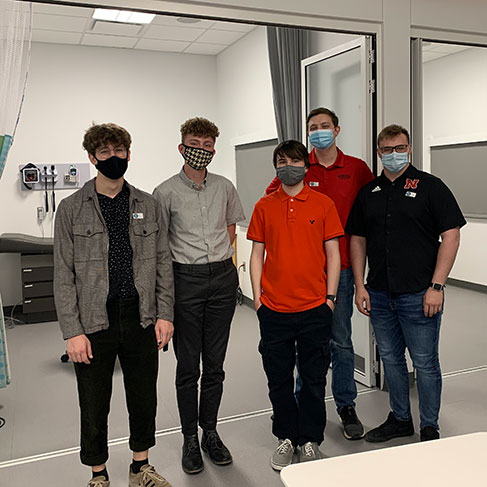
Team Members
Adrian Pilkington
Jacob Fox
Jeremiah Cantu
Jaden Goter
Ryan Thomas
Faculty Supervisor
Sue Schuelke
Project Descrition
The agricultural industry is one of the most injury-prone industries in the US, with tractor rollovers being the primary cause of injuries. Currently, there exists a gap in education about agricultural safety with many universities not including it in their curriculum at all. UNMC has the unique position of being located within an agriculture-heavy state thus it is UNMC’s goal to improve the current education using virtual reality to provide a more hands-on experience. They also want the student nurses to be conduits of change and educate farmers and future farmers utilizing virtual reality at schools and agricultural gatherings.
The Agriculture Safety & Health VR team was tasked with creating a virtual reality game simulating a tractor rollover. Developed for Oculus Quests using Unity, the object of the game is to place the player in an open-world farm where they can explore and drive a tractor. The tractor has the same controls as a real tractor, the speed of a tractor, and will roll over when the player drives irresponsibly.
From putting out a burning scarecrow to clearing a fallen tree, the game has various objectives for the user to complete all while trying not to flip over on difficult terrain. They can also free-roam and drive around the farm, collecting gold tractor coins or racing cows. The Agriculture Safety & Health game helps players learn about how to drive a tractor safely with no actual real-life risks and will help change the future of tractor safety education.
Adrian Pilkington
Jacob Fox
Jeremiah Cantu
Jaden Goter
Ryan Thomas
Faculty Supervisor
Sue Schuelke
Project Descrition
The agricultural industry is one of the most injury-prone industries in the US, with tractor rollovers being the primary cause of injuries. Currently, there exists a gap in education about agricultural safety with many universities not including it in their curriculum at all. UNMC has the unique position of being located within an agriculture-heavy state thus it is UNMC’s goal to improve the current education using virtual reality to provide a more hands-on experience. They also want the student nurses to be conduits of change and educate farmers and future farmers utilizing virtual reality at schools and agricultural gatherings.
The Agriculture Safety & Health VR team was tasked with creating a virtual reality game simulating a tractor rollover. Developed for Oculus Quests using Unity, the object of the game is to place the player in an open-world farm where they can explore and drive a tractor. The tractor has the same controls as a real tractor, the speed of a tractor, and will roll over when the player drives irresponsibly.
From putting out a burning scarecrow to clearing a fallen tree, the game has various objectives for the user to complete all while trying not to flip over on difficult terrain. They can also free-roam and drive around the farm, collecting gold tractor coins or racing cows. The Agriculture Safety & Health game helps players learn about how to drive a tractor safely with no actual real-life risks and will help change the future of tractor safety education.
Team #6 - COVID-19 Detection System
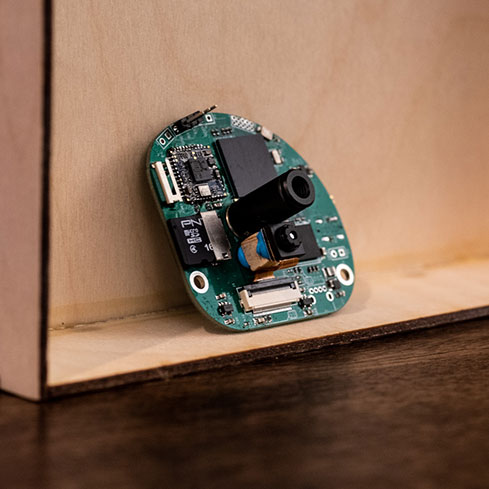
Team Members
Evan Hailey
Tyler Johnson
SungHa Park
Garrett Szwanek
Faculty Supervisor
Mark Bauer
Project Descrition
We designed a passive device that can identify and take the temperature of people's foreheads while they walk through a doorway. Given the current pandemic that we have been facing, we wanted to create a low-cost solution to prevent the further spread of COVID-19. The goal of our project is to collect enough data from our device to help characterize buildings or any place with large gatherings of people. This would allow epidemiologists to quickly identify local outbreaks or high-risk areas and assist in contact tracing. At the heart of our project is a microprocessor running Linux. Combining our microprocessor with an image sensor and medical-grade infrared thermometer, equipped with a five-degree field of view lens, allows us to detect and take temperature readings of a person's forehead.
Evan Hailey
Tyler Johnson
SungHa Park
Garrett Szwanek
Faculty Supervisor
Mark Bauer
Project Descrition
We designed a passive device that can identify and take the temperature of people's foreheads while they walk through a doorway. Given the current pandemic that we have been facing, we wanted to create a low-cost solution to prevent the further spread of COVID-19. The goal of our project is to collect enough data from our device to help characterize buildings or any place with large gatherings of people. This would allow epidemiologists to quickly identify local outbreaks or high-risk areas and assist in contact tracing. At the heart of our project is a microprocessor running Linux. Combining our microprocessor with an image sensor and medical-grade infrared thermometer, equipped with a five-degree field of view lens, allows us to detect and take temperature readings of a person's forehead.
Team #7 - The Bipedal Robot
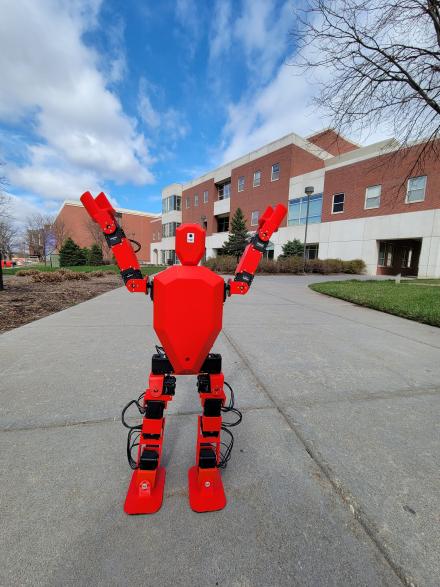
Team Members
Ezra Bailey-Kelly
Dominic Paul
Zac Scott
Christian White
Faculty Supervisor
Mark Bauer
Project Descrition
The goal of this project was to design, manufacture, and program a fully functional walking and self-balancing bi-pedal robot. The robot uses 16 servo motors to control both legs and arms, with a Raspberry Pi as the main processing unit, a NAVX Micro IMU providing gyroscopic and accelerometer data for balancing, and a Pixie Cam to provide vision for walking. The robot is programmed using Python through ROS, the Robot Operation System and the servos and control boards are powered off a single 15V battery pack.
Ezra Bailey-Kelly
Dominic Paul
Zac Scott
Christian White
Faculty Supervisor
Mark Bauer
Project Descrition
The goal of this project was to design, manufacture, and program a fully functional walking and self-balancing bi-pedal robot. The robot uses 16 servo motors to control both legs and arms, with a Raspberry Pi as the main processing unit, a NAVX Micro IMU providing gyroscopic and accelerometer data for balancing, and a Pixie Cam to provide vision for walking. The robot is programmed using Python through ROS, the Robot Operation System and the servos and control boards are powered off a single 15V battery pack.
Team #8 - Feline Front Limb Prosthetic
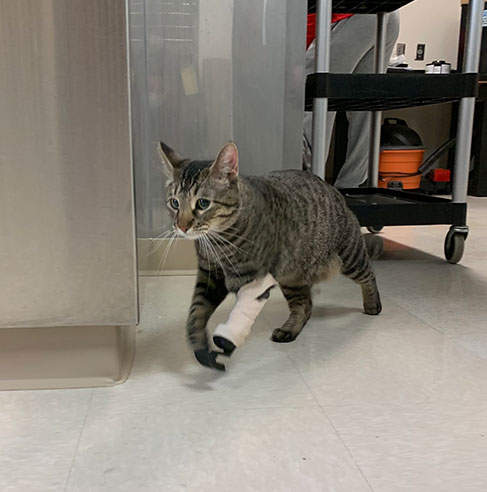
Team Members
Harrison Grasso
Lexi Jensen
Jaden Schovanec
Abby Smith
Rachael Stanek
Faculty Supervisor
Deepak Keshwani
Project Descrition
Cats are very adaptable creatures. However, a lower limb amputation can severely cripple a feline who is overweight or suffering from bone deficiencies or joint complications. Whether or not a cat amputee falls into these medical categories, an adjustable and removable prosthetic is able to improve a cat’s quality of life by increasing mobility and decreasing trauma to the amputation site. We were tasked with designing an affordable and easy-to-use forelimb prosthetic for our cat client, Olive, that can then be used by a range of cats that suffer from similar lower limb amputations.
Harrison Grasso
Lexi Jensen
Jaden Schovanec
Abby Smith
Rachael Stanek
Faculty Supervisor
Deepak Keshwani
Project Descrition
Cats are very adaptable creatures. However, a lower limb amputation can severely cripple a feline who is overweight or suffering from bone deficiencies or joint complications. Whether or not a cat amputee falls into these medical categories, an adjustable and removable prosthetic is able to improve a cat’s quality of life by increasing mobility and decreasing trauma to the amputation site. We were tasked with designing an affordable and easy-to-use forelimb prosthetic for our cat client, Olive, that can then be used by a range of cats that suffer from similar lower limb amputations.
Team #9 - X-EDM (Electrical Discharge Machine)
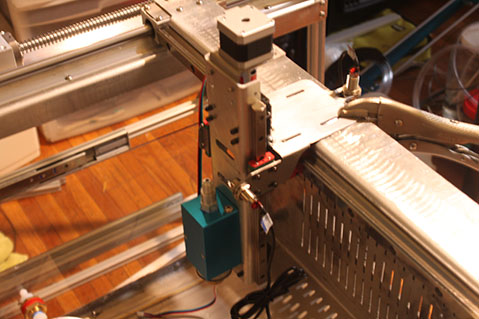
Team Members
Ryan Jhi
Hisham Al Rashdi
Ben Ripa
Pedro Rodriguez
Faculty Supervisor
Mark Bauer
Project Descrition
Our Electrical Discharge Machine (EDM) uses pulses of electricity to drill through practically any conductive material. The machine can cut through tungsten carbide, hardened steel, cobalt, and other materials that would not be practical to machine. In addition, the EDM process does not exert cutting force on object being machined. This allows the machine to cut into curved surfaces, drill extremely high aspect ratio holes among other things. When traditional methods of drilling cannot achieve the desired operation, EDM steps in to get the job done.
Ryan Jhi
Hisham Al Rashdi
Ben Ripa
Pedro Rodriguez
Faculty Supervisor
Mark Bauer
Project Descrition
Our Electrical Discharge Machine (EDM) uses pulses of electricity to drill through practically any conductive material. The machine can cut through tungsten carbide, hardened steel, cobalt, and other materials that would not be practical to machine. In addition, the EDM process does not exert cutting force on object being machined. This allows the machine to cut into curved surfaces, drill extremely high aspect ratio holes among other things. When traditional methods of drilling cannot achieve the desired operation, EDM steps in to get the job done.
Team #10 - Biorefinery of Acrylic Acid from Corn Stover (with valuable Levulinic Acid Byproduct)
Team Members
Kaylee Alles
Kang Min Choi
Catherine Nouva
Isaac Zavala
Faculty Supervisor
Yasar Demirel
Project Descrition
With the concern of carbon emissions and waste, sustainable development of chemical processes is more relevant than ever. When we cater our design to the concepts of bioeconomy and circular economy, we can address these complicated issues and set realistic goals. Through innovative engineering, we consider all aspects of plant development and sustainability. Our process considers a base design for bio-acrylic acid production by dehydration of Lactic Acid. We propose changes that will further limit waste production and carbon emissions, and increase the conversion of our product. We assess sustainability through a rigorous research and development process, improved scale-up changes, economic analysis, and feasibility analysis. This process is the conversion of glucose to 3-HPA, and then eventual dehydration to acrylic acid. We also produce and sell useable byproduct Levulinic Acid in this process. Our bioeconomy process utilizes a corn waste product (corn stover) by extracting the cellulose and generating glucose. This project aims to minimize water usage, solvent usage, energy usage, and waste.
Kaylee Alles
Kang Min Choi
Catherine Nouva
Isaac Zavala
Faculty Supervisor
Yasar Demirel
Project Descrition
With the concern of carbon emissions and waste, sustainable development of chemical processes is more relevant than ever. When we cater our design to the concepts of bioeconomy and circular economy, we can address these complicated issues and set realistic goals. Through innovative engineering, we consider all aspects of plant development and sustainability. Our process considers a base design for bio-acrylic acid production by dehydration of Lactic Acid. We propose changes that will further limit waste production and carbon emissions, and increase the conversion of our product. We assess sustainability through a rigorous research and development process, improved scale-up changes, economic analysis, and feasibility analysis. This process is the conversion of glucose to 3-HPA, and then eventual dehydration to acrylic acid. We also produce and sell useable byproduct Levulinic Acid in this process. Our bioeconomy process utilizes a corn waste product (corn stover) by extracting the cellulose and generating glucose. This project aims to minimize water usage, solvent usage, energy usage, and waste.
Team #11 - Solid State Stereo Amplifier
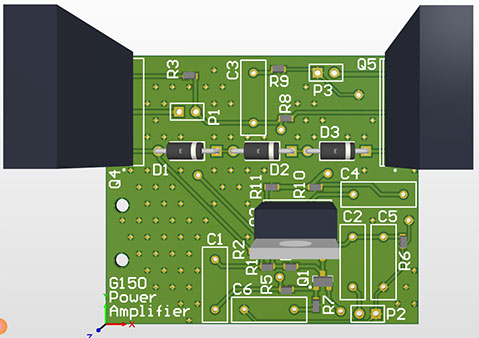
Team Members
Connor Chuppa
Spencer Hagedorn
Joshua Lemke
Erik Sorensen
Faculty Supervisor
Mark Bauer
Project Descrition
A two channel 100 Watt per channel solid state stereo amplifier with multiple audio input options, remote and rotary controls, and an OLED display.
Connor Chuppa
Spencer Hagedorn
Joshua Lemke
Erik Sorensen
Faculty Supervisor
Mark Bauer
Project Descrition
A two channel 100 Watt per channel solid state stereo amplifier with multiple audio input options, remote and rotary controls, and an OLED display.
Team #12 - Cardio Access Machine
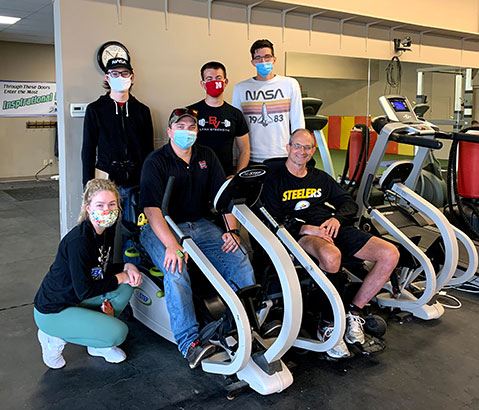
Team Members
Tucker Loosbrock
Alex Ocken
Hunter Rausch
Valyrie Rude
Brooke Strenke
Faculty Supervisor
Dr. Nelson & Dr. Palik
Project Descrition
MS Forward is a gym in Omaha which focuses on training people with MS. Our project was to design a cardio machine accessible to users who require the use of a wheelchair. We designed a elliptical-like machine that allows users to get a cardio exercise without having to leave their wheelchair.
Tucker Loosbrock
Alex Ocken
Hunter Rausch
Valyrie Rude
Brooke Strenke
Faculty Supervisor
Dr. Nelson & Dr. Palik
Project Descrition
MS Forward is a gym in Omaha which focuses on training people with MS. Our project was to design a cardio machine accessible to users who require the use of a wheelchair. We designed a elliptical-like machine that allows users to get a cardio exercise without having to leave their wheelchair.